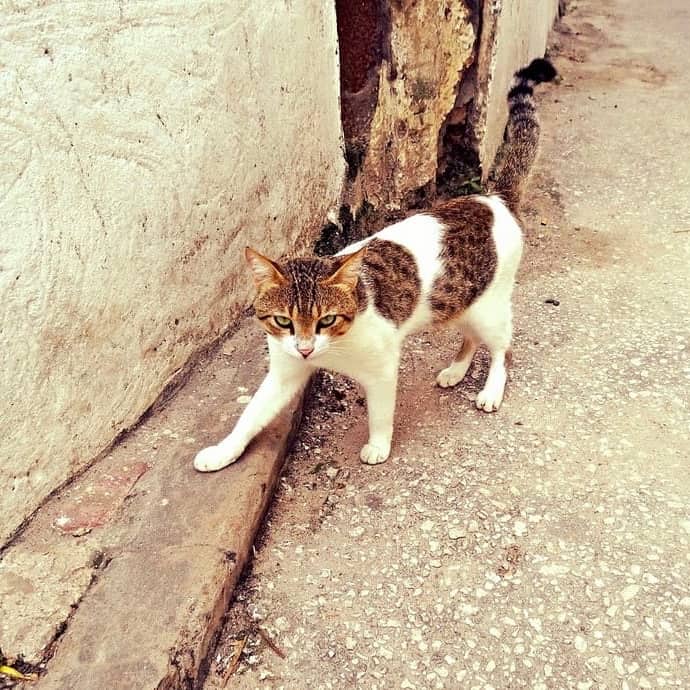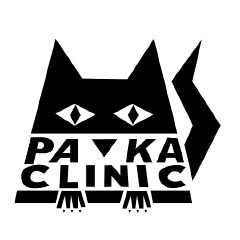FAQs


Frequently Asked Questions about Zanzibar Cats
Famous quote by Henry David Thoreau in his book Walden.
It is not worth the while to go round the world to count the cats in Zanzibar. Yet do this even till you can do better, and you may perhaps find some “Symmes’ Hole” by which to get at the inside at last. England and France, Spain and Portugal, Gold Coast and Slave Coast, all front on this private sea; but no bark from them has ventured out of sight of land, though it is without doubt the direct way to India. If you would learn to speak all tongues and conform to customs of all nations, if you would travel farther than all travellers, be naturalized in all climes, and cause the Sphinx to dash her head against a stone, even obey the precept of the old philosopher, and Explore thyself. Herein are demanded the eye and the nerve. Only the defeated and deserters go to the wars, cowards that run away and enlist. Start now on that farthest western way, which does not pause at the Mississippi or the Pacific, nor conduct toward a worn-out China or Japan, but leads on direct, a tangent to this sphere, summer and winter, day and night, sun down, moon down, and at last earth down too.
Henry David Thoreau (2016). “Walden”, p.228, Xist Publishing
You will see many cats in Zanzibar; cats are everywhere. But did Henry David really have these felines in mind? Probably not. Rather, he was saying that instead of going around the world to find a solution to one’s problems – a person should perhaps look within themselves.
On the tropical Island of Zanzibar there is a huge cat population which arrived here together with a variety of immigrants down through the centuries. That is the reason the cats poplulation is also very diverse, you will find cats of the Egyptian style next to European cats, some with an African wildcat heritage and a bushy squirrel-like tail, and some looking more like the tailless Manx cats.
Most of these cats live in the street! This is where Paka Clinic works.
Some Zanzibar cats are descended from those kept on cargo ships to control rats.
Also cats, especially in Islam, were offered as gifts, or brought by all the different immigrants coming to the island.
While a few of the cats on Zanzibar are pets, most live freely on the streets, and spend their days scavenging scraps, tolerated by the population often for their ability to control vermin.
The cats of Zanzibar have a presence rarely seen in the stray cat world. You see them in full and unguarded sleep on foot-worn steps in the middle of the day in the relentless cacophony of commerce.
Since there are almost no dogs in the urban areas of this island archipelago off the East African coast, and since they are more than tolerated by the locals residents, they have little to fear except the traffic.
The park, known for its sumptuous seafood, draws hundreds of daily revellers — and a colony of stray cats.
“These cats live a hard life. Children often pelt stones at them,” said UK tourist Hayward.
But, a veterinary facility in Zanzibar, the Paka clinic, has made a name for itself by showing love and empathy for the cats, neutering them to help improve their welfare and control their rising population.
The archipelago off the coast of Tanzania has one of the biggest population of stray cats in the region.
In the popular spot on the island, the clinic, named after the Swahili word for cat, provides medical care before releasing the cats where they were found, said officials.
Paka Clinic Brings Hope
Chief veterinarian Goodluck Gaudence said the clinic was concerned about the hardships that the cats face and determined to improve their lives by easing their suffering.
“We realized that there are many cats that need our attention. We visit colonies that we are monitoring regularly to attend to sick cats,” he told Anadolu Agency.
The clinic does not offer the felines shelter but provides care until they have finished treatment and ready to return to the streets, he said.
Laura Nicholas, a veterinary at the clinic, said the decision to neuter was prompted by the rising population of strays who struggle just to survive.
“We discovered that female cats get pregnant pretty quickly. In one year, a female cat can give birth to up to six kittens, three times a year” she said. But actually more than 50% die in the first weeks. This suffering is not good.
Nicholas said the neutering campaign helped control the population and improve the cats’ well-being, underlining the importance of spaying female cats “before she can have kittens herself.”
Unwanted pregnancies
Paka Clinic finds the issue with unwanted pregnancies is mainly a problem with Zanzibar house cats. House cats live often together in the big houses with people, and get given leftovers
However, they are not pets in the sense, that the people feel responsible for them.
Often these females produce unwanted kittens, that the people discard. This causes extra problems. So Paka Clinic works hard to convince people to bring the females to be neutered (sterilised).
Paka clinic vets believe sterilizing cats was the best way to reduce their numbers and birth rates.
Neutering males and spaying females prevents unwanted pregnancies, and can curb unwanted behavioural patterns associated with sexual maturity, and reduces the risk of certain diseases, according to doctors at the clinic.
“Because male cats don’t have kittens themselves and it only takes one male to make lots of female cats pregnant,” said Nicholas, spaying a female cat “limits numbers in an efficient way.”
For neutering males Paka Clinic faces stronger resistance in the local population. With females, the population is able to see the direct advantage for themselves. But not so much with the male cats.
Also the male cat’s behaviour isn’t quite as disturbing in Zanzibar as maybe it would be in Europe or elsewhere.”
She said kittens reach sexual maturity and become capable of breeding and producing kittens at six months old.
About 498 female cats and 42 male cats were sterilized last year, according to the clinic. It said that in August this year its staff, in collaboration with an international veterinarian team, had sterilized more than 100 cats in five days.
After doing so, they tag the animals on one ear to show that it had been sterilized, explained Gaudence, the chief veterinarian.
Transferable vet skills
Paka clinic offers free veterinary services to Zanzibaris to ensure that the island’s high poverty rate is not a barrier to accessing veterinary care.
“Many cats get sick and die because they don’t have access to medical treatment,” said Gaudence.
Abandoned and left to fend for themselves, residents said some street cats are neglected and often beaten.
“There are just too many cats. We call them Kimburu. If you aren’t careful, they can steal your food right out of your hands,” said local resident Zuwena Maulid Ali.
Gaudence said the clinic offers veterinary skills and promotes animal welfare by educating communities about how to take care of their pets.
He said Zanzibaris cooperated with veterinarians, frequently sending their pets or bring injured or sick street cats to the clinic for treatment.
The clinic is also supervising a program for foreigners to adopt pets.
Feline Viral Respiratory Diseases
In Zanzibar, there a number of common diseases caused by viral infections that affect the respiratory system in general. Disease is common in large groups of cats such as cat breeding sites, boarding catteries, rescue shelters and community cat colonies.
Feline viral respiratory disease has two main causes:
1. Feline Herpes virus 1 (FHV-1) leading to Feline Rhinotracheitis infection which, especially for kittens, very often leads to blindness. With treatment this can be avoided, so please bring us these kitten for treatment before it’s too late.
2. Feline Calicivirus (FCV) which is bad infections in the mouth and the throat. Cats stop eating and appear dirty around the mouth.
In Zanzibar, FCV appears to be more common in kittens and adult cats, however FHV-1 induces more severe disease compared to FCV. The prevalence is as high as 90% in some colonies.
During rainy season, many cats suffer mixed infection of FHV-1 and FCV. Both of these viruses are highly successful pathogens affecting not only community cats but also indoor cats despite
vaccination.
Feline Herpes Virus 1 Infection (FHV-1)
FHV-1 causes acute rhinitis, causing sneezing, unilateral or bilateral conjunctivitis accompanied by fever, anorexia, depression and sometimes hypersalivation. The disease incubation period is 2-6 days depending on the infective dose of pathogens and the cat’s immunity. As the disease progresses, oculonasal discharges are observed, sometimes with coughing. In some cases, only dyspnea is present as the observed clinical sign.
Feline Calicivirus Infection
Infection is typically milder than FHV-1, however some strains cause severe disease in cats. Oral ulcers are a frequent sign and may occur as the only clinical sign. Sneezing, conjunctivitis, high
fever, lack of appetite and general malaise also occur. Some strains show pyrexia and lameness, which may not involve oral or respiratory signs. In some clinical cases, interstitial pneumonia characterized by dyspnea is the main feature. Cats with virulent systemic disease show ulcerative lesions on the limbs and head, pyrexia, cutaneous edema and sometimes jaundice.
Diagnosis for Feline Respiratory Viral Disease
At Paka Clinic, diagnosis of the above viral diseases which cause upper respiratory infections (URIs) is mainly based on the epidemiology of the disease and clinical signs. Many clinical cases attended at Paka Clinic show mixed Infection between FCV and FHV-1. This mixed infection appears to be the leading cause of blindness in many neonatal kittens and those older than eight weeks, due to late treatment.
Feline Ataxia Syndrome
This is a syndrome seen in young kittens. The virus infects and replicates in the placental cells of the mother cat and then infects the fetus in the placenta. Infection during the middle third of gestation to immediate post-natal can lead to cerebellar hypoplasia. It is histologically seen as a marked reduction in the number of granular and Purkinje cells of cerebellum. The retina may also be affected, but this is not usually important clinically. Feline ataxia is present at birth but symptoms do not usually present until walking age (3 weeks). Only some of the litter is
affected. Affected cats show symmetrical ataxia, a characteristic hypermetria, incoordination, and often intention tremors. Signs persist for life, but the animal may compensate and thrive.
It’s uncommon in Zanzibar because of the high mortality in affected community kittens.

- Scientific name: Zamioculcas spp.
- Other names: Zuzu plant, emerald palm, Zanzibar gem
- Level of toxicity: Mild to moderate
- Toxic compound: Insoluble calcium oxalate crystals
- Toxic parts: All parts of the plant are toxic to cats
- Causes: Oral irritation
- Symptoms: Drooling, pawing at the mouth, oral swelling and pain, vomiting, loss of appetite and difficulty breathing
Here in Zanzibar the biggest problem for cats by ingestion is rat poison. This may be given on purpose or most likely by accident. Paka Clinic Zanzibar will treat poisoned cats where possible.

